Navigation
World’s Largest Fully Protected Marine Reserve Established by U.K. Government: Pitcairn Islands Marine Reserve
U.K. government establishes world’s largest fully protected marine reserve and sets a new standard for monitoring. The 834,334-square-kilometre reserve (322,138 square miles) is home to at least 1,249 species of marine mammals, seabirds and fish, the new reserve protects some of the most near-pristine ocean habitat on Earth.
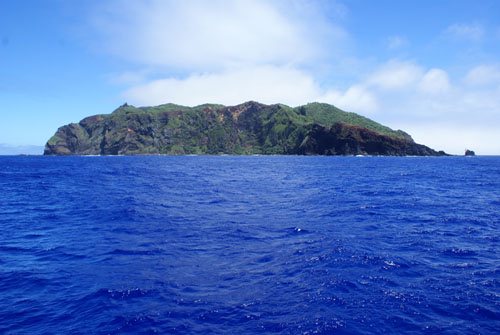 Pitcairn is the only inhabited island in the chain, with a population of just over 50 people.: The majority are descendants of the mutineers of the British Royal Navy’s HMS Bounty, who settled Pitcairn with Tahitian companions in 1790. Photograph by Andrew Christian
Pitcairn is the only inhabited island in the chain, with a population of just over 50 people.: The majority are descendants of the mutineers of the British Royal Navy’s HMS Bounty, who settled Pitcairn with Tahitian companions in 1790. Photograph by Andrew Christian
U.K. government establishes world’s largest fully protected marine reserve and sets a new standard for monitoring.
On March 18, 2015, The Pew Charitable Trusts and the National Geographic Society praised action by the British government today to create the world's largest fully protected marine reserve around the Pitcairn Islands, an overseas territory in the South Pacific Ocean.
The 834,334-square-kilometre reserve (322,138 square miles) is roughly 3 ½ times the size of the United Kingdom. Home to at least 1,249 species of marine mammals, seabirds and fish, the new reserve protects some of the most near-pristine ocean habitat on Earth.
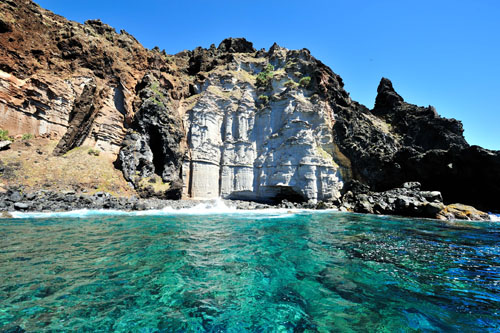 The Gods from the Sea:The Pitcairn Islands, a U.K. overseas territory, is made up of four island,: Pitcairn, Henderson, Oeno, and Ducie. The territory lies 4,500 kilometers (about 2,800 miles) from New Zealand, its closest landmass, making it one of the world’s most remote island groups. Photograph by Tony Probst
The Gods from the Sea:The Pitcairn Islands, a U.K. overseas territory, is made up of four island,: Pitcairn, Henderson, Oeno, and Ducie. The territory lies 4,500 kilometers (about 2,800 miles) from New Zealand, its closest landmass, making it one of the world’s most remote island groups. Photograph by Tony Probst
In 2013, Pew and National Geographic joined the local elected body, the Pitcairn Island Council, in submitting a proposal calling for creation of a marine reserve to protect these spectacular waters. "With this designation, the United Kingdom raises the bar for protection of our ocean and sets a new standard for others to follow," said Matt Rand, director of Global Ocean Legacy, a project of Pew and its partners that advocates for establishment of the world’s great marine parks. “The United Kingdom is the caretaker of more than 6 million square kilometres of ocean — the fifth-largest marine area of any country. Through this designation, British citizens are playing a vital role in ensuring the health of our seas."
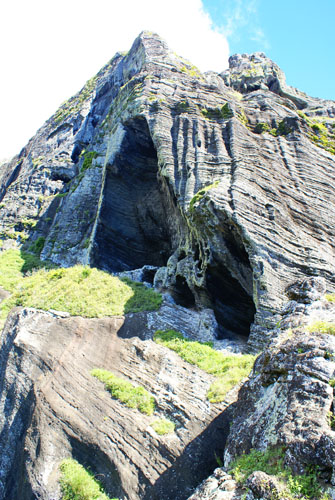 Global Ocean Legacy, a project of Pew and its partners, is working with communities, governments,: and scientists around the world to safeguard some of the most important and unspoiled ocean environments. The project has helped to protect 3,432,334 square kilometers (1,325,231 square miles) of ocean—an area almost 10 times the size of the Great Barrier Reef and more than 14 times the size of the United Kingdom. Photograph by Andrew Christian"The Pitcairn Islands Marine Reserve will build a refuge of untouched ocean to protect and conserve a wealth of marine life," he added. "Today’s action by Prime Minister Cameron will protect the true bounty of the Pitcairn Islands — the array of unique marine life in the surrounding pristine seas," said National Geographic Explorer-in-Residence Enric Sala, head of Society’s Pristine Seas project. "Our first-ever scientific exploration of the area revealed entirely new species as well as an abundance of top predators like sharks."
Global Ocean Legacy, a project of Pew and its partners, is working with communities, governments,: and scientists around the world to safeguard some of the most important and unspoiled ocean environments. The project has helped to protect 3,432,334 square kilometers (1,325,231 square miles) of ocean—an area almost 10 times the size of the Great Barrier Reef and more than 14 times the size of the United Kingdom. Photograph by Andrew Christian"The Pitcairn Islands Marine Reserve will build a refuge of untouched ocean to protect and conserve a wealth of marine life," he added. "Today’s action by Prime Minister Cameron will protect the true bounty of the Pitcairn Islands — the array of unique marine life in the surrounding pristine seas," said National Geographic Explorer-in-Residence Enric Sala, head of Society’s Pristine Seas project. "Our first-ever scientific exploration of the area revealed entirely new species as well as an abundance of top predators like sharks."
"It was like traveling to a new world full of hidden and unknown treasures, a world that will now be preserved for generations to come," said Sala. "The people of Pitcairn are extremely excited about designation of the world’s largest marine reserve in our vast and unspoiled waters of the Pitcairn Islands, including Ducie, Oeno, and Henderson Islands," said the Pitcairn Island Council.
"We are proud to have developed and led this effort in partnership with Pew and National Geographic to protect these spectacular waters we call home for generations to come."
A March 2012 scientific survey of Pitcairn's marine environment, led by the National Geographic Pristine Seas project in partnership with Pew, revealed a vibrant ecosystem that includes the world's deepest known living plant, a species of encrusting coralline algae found 382 metres (1,253 feet) below sea level.
The reserve also protects one of the two remaining raised coral atolls on the planet as well as 40-Mile Reef, the deepest and most well-developed coral reef known in the world.
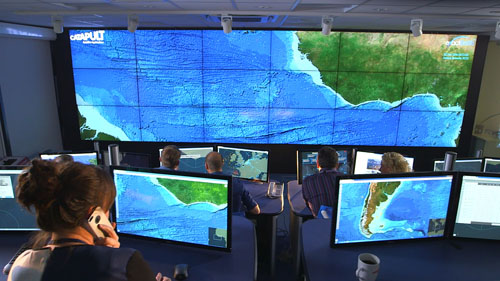 The British government will work with Pew and the Swiss-based Bertarelli Foundation to monitor the marine reserve using: Pew’s Project Eyes on the Seas and its Virtual Watch Room technology. This groundbreaking system uses satellites and other data sources to provide a live view of action on the water and enables officials to detect illegal fishing within moments of its occurrence. The information can be used to enforce the prohibition on commercial fishing within the reserve’s boundaries. Credit Satellite Applications Catapult
The British government will work with Pew and the Swiss-based Bertarelli Foundation to monitor the marine reserve using: Pew’s Project Eyes on the Seas and its Virtual Watch Room technology. This groundbreaking system uses satellites and other data sources to provide a live view of action on the water and enables officials to detect illegal fishing within moments of its occurrence. The information can be used to enforce the prohibition on commercial fishing within the reserve’s boundaries. Credit Satellite Applications Catapult
In conjunction with the designation, the Bertarelli Foundation announced a five-year commitment to support the monitoring of the Pitcairn Islands Marine Reserve as part of Pew’s Project Eyes on the Seas, using a technology known as the Virtual Watch Room. With this satellite monitoring system, developed through a collaboration between Pew and the U.K.-based company Satellite Applications Catapult, government officials will be able to detect illegal fishing activity in real time.
This is the first time any government has combined creation of a marine reserve with the most up-to-date technology for surveillance and enforcement of a protected area.
Ernesto Bertarelli of the Bertarelli Foundation said, "Advances in tracking technology are enabling us to monitor the ocean as never before and make marine reserves truly enforceable; these solutions, along with the commitment of individual governments are bringing about changes in how we protect the marine environment."
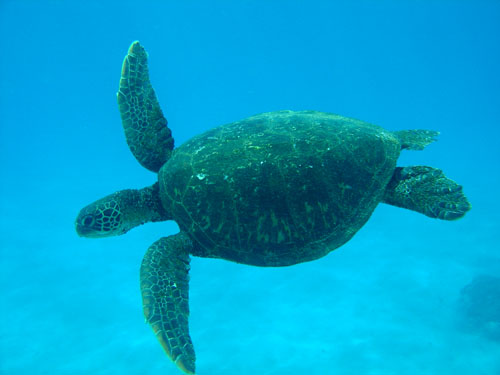 The marine reserve will help protect the 1,249 known plants and animals found in these waters,: including 365 species of fish, 22 species of whales and dolphins, and two species of turtles. Photograph by Andrew Christian
The marine reserve will help protect the 1,249 known plants and animals found in these waters,: including 365 species of fish, 22 species of whales and dolphins, and two species of turtles. Photograph by Andrew Christian
Numerous British scientific and conservation organizations, including the Royal Society for Protection of Birds, the Blue Marine Foundation, Greenpeace UK, the Marine Conservation Society, the Zoological Society of London, and Parliament’s Environmental Audit Committee, supported the designation of the Pitcairn Islands Marine Reserve.
Today's announcement is part of a growing international movement to safeguard important places in the sea that has protected more than 6.5 million square kilometres (2.5 million square miles) to date. Much of this activity has taken place over the last nine years. In April 2010, the British government created the Chagos Marine Reserve in the Indian Ocean — until today the largest continuous, fully protected area of ocean in the world.
Most recently, in September 2014, U.S. President Barack Obama significantly expanded the Pacific Remote Islands National Marine Monument, first created by President George W. Bush, in the south-central Pacific.
Despite these successes, only about 1 percent of the world’s ocean is fully protected.
About The Pew Charitable Trusts
The Pew Charitable Trusts is driven by the power of knowledge to solve today’s most challenging problems. Pew’s Global Ocean Legacy campaign is a partnership of six individuals and organizations who share a vision: to protect the world’s ocean for future generations. Learn more at http://www.globaloceanlegacy.org.
About National Geographic
With a mission to inspire, illuminate, and teach, the National Geographic Society is one of the world’s largest non-profit scientific and educational organizations. The member-supported Society, which believes in the power of science, exploration, and storytelling to change the world, reaches over 600 million people each month through its media platforms, products, and events. National Geographic has funded more than 11,000 research, conservation, and exploration projects, and its education programs promote geographic literacy.
The Pristine Seas program seeks to help protect the last wild places in the ocean over the next five years. For more information, visit http://www.nationalgeographic.com, and find us on Facebook, Twitter, Instagram, Google+, YouTube, LinkedIn and Pinterest.
This news is from The Pew Charitable Trusts, 18 March 2015. This article was published on the Horizon International Solutions Site at www.solutions-site.org on 18 March 2015.
Fact Sheet: The world’s largest fully protected marine reserve, The Pitcairn Islands
at http://www.pewtrusts.org/~/media/Assets/2015/03/GOL_Pitcairn_Fact_Sheet.pdf
Search
Latest articles
Agriculture
- World Water Week: Healthy ecosystems essential to human health: from coronavirus to malnutrition Online session Wednesday 24 August 17:00-18:20
- World Water Week: Healthy ecosystems essential to human health: from coronavirus to malnutrition Online session Wednesday 24 August 17:00-18:20
Air Pollution
- "Water and Sanitation-Related Diseases and the Changing Environment: Challenges, Interventions, and Preventive Measures" Volume 2 Is Now Available
- Global Innovation Exchange Co-Created by Horizon International, USAID, Bill and Melinda Gates Foundation and Others
Biodiversity
- It is time for international mobilization against climate change
- World Water Week: Healthy ecosystems essential to human health: from coronavirus to malnutrition Online session Wednesday 24 August 17:00-18:20
Desertification
- World Water Week: Healthy ecosystems essential to human health: from coronavirus to malnutrition Online session Wednesday 24 August 17:00-18:20
- UN Food Systems Summit Receives Over 1,200 Ideas to Help Meet Sustainable Development Goals
Endangered Species
- Mangrove Action Project Collaborates to Restore and Preserve Mangrove Ecosystems
- Coral Research in Palau offers a “Glimmer of Hope”
Energy
- Global Innovation Exchange Co-Created by Horizon International, USAID, Bill and Melinda Gates Foundation and Others
- Wildlife Preservation in Southeast Nova Scotia
Exhibits
- Global Innovation Exchange Co-Created by Horizon International, USAID, Bill and Melinda Gates Foundation and Others
- Coral Reefs
Forests
- NASA Satellites Reveal Major Shifts in Global Freshwater Updated June 2020
- Global Innovation Exchange Co-Created by Horizon International, USAID, Bill and Melinda Gates Foundation and Others
Global Climate Change
- It is time for international mobilization against climate change
- It is time for international mobilization against climate change
Global Health
- World Water Week: Healthy ecosystems essential to human health: from coronavirus to malnutrition Online session Wednesday 24 August 17:00-18:20
- More than 400 schoolgirls, family and teachers rescued from Afghanistan by small coalition
Industry
- "Water and Sanitation-Related Diseases and the Changing Environment: Challenges, Interventions, and Preventive Measures" Volume 2 Is Now Available
- Global Innovation Exchange Co-Created by Horizon International, USAID, Bill and Melinda Gates Foundation and Others
Natural Disaster Relief
- STOP ATTACKS ON HEALTH CARE IN UKRAINE
- Global Innovation Exchange Co-Created by Horizon International, USAID, Bill and Melinda Gates Foundation and Others
News and Special Reports
- World Water Week: Healthy ecosystems essential to human health: from coronavirus to malnutrition Online session Wednesday 24 August 17:00-18:20
- STOP ATTACKS ON HEALTH CARE IN UKRAINE
Oceans, Coral Reefs
- World Water Week: Healthy ecosystems essential to human health: from coronavirus to malnutrition Online session Wednesday 24 August 17:00-18:20
- Mangrove Action Project Collaborates to Restore and Preserve Mangrove Ecosystems
Pollution
- Zakaria Ouedraogo of Burkina Faso Produces Film “Nzoue Fiyen: Water Not Drinkable”
- "Water and Sanitation-Related Diseases and the Changing Environment: Challenges, Interventions, and Preventive Measures" Volume 2 Is Now Available
Population
- "Water and Sanitation-Related Diseases and the Changing Environment: Challenges, Interventions, and Preventive Measures" Volume 2 Is Now Available
- "Water and Sanitation-Related Diseases and the Changing Environment: Challenges, Interventions, and Preventive Measures" Volume 2 Is Now Available
Public Health
- Honouring the visionary behind India’s sanitation revolution
- Honouring the visionary behind India’s sanitation revolution
Rivers
- World Water Week: Healthy ecosystems essential to human health: from coronavirus to malnutrition Online session Wednesday 24 August 17:00-18:20
- Mangrove Action Project Collaborates to Restore and Preserve Mangrove Ecosystems
Sanitation
- Honouring the visionary behind India’s sanitation revolution
- Honouring the visionary behind India’s sanitation revolution
Toxic Chemicals
- "Water and Sanitation-Related Diseases and the Changing Environment: Challenges, Interventions, and Preventive Measures" Volume 2 Is Now Available
- Actions to Prevent Polluted Drinking Water in the United States
Transportation
- "Water and Sanitation-Related Diseases and the Changing Environment: Challenges, Interventions, and Preventive Measures" Volume 2 Is Now Available
- Urbanization Provides Opportunities for Transition to a Green Economy, Says New Report
Waste Management
- Honouring the visionary behind India’s sanitation revolution
- Honouring the visionary behind India’s sanitation revolution
Water
- Honouring the visionary behind India’s sanitation revolution
- Honouring the visionary behind India’s sanitation revolution
Water and Sanitation
- Honouring the visionary behind India’s sanitation revolution
- Honouring the visionary behind India’s sanitation revolution

